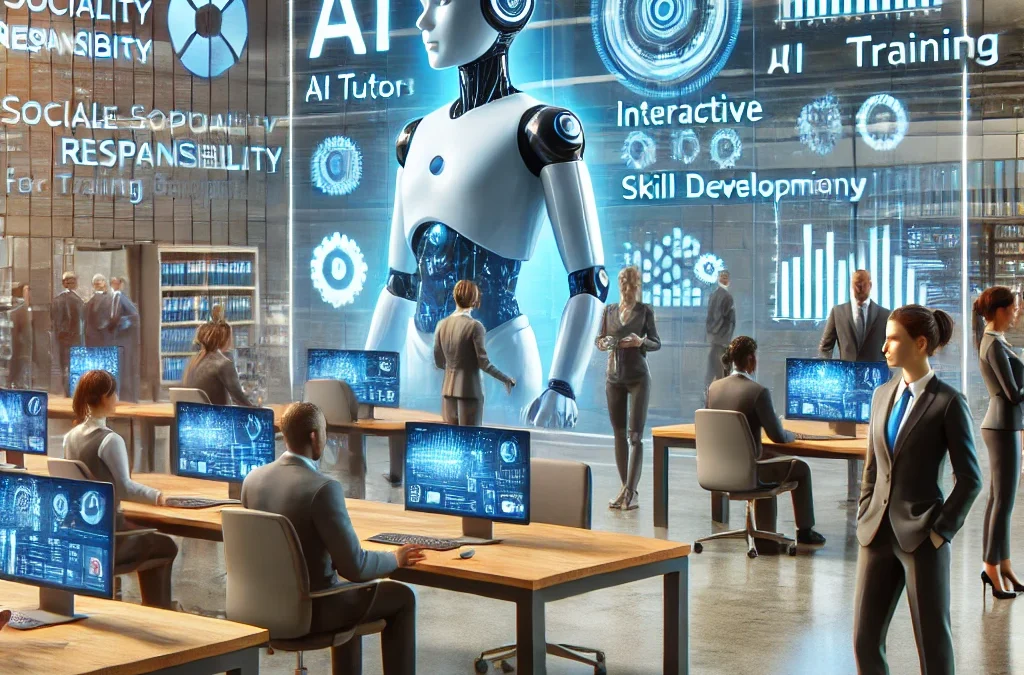
Unconventional Careers for Women – Commercial Vehicle Driving
November 27, 2024
AI in CSR – Tracking the Impact of Solar Panels in CSR projects
February 27, 2025While AI adoption across various sectors is rising year on year, adoption by NGOs and civil society organizations remains sparse.
Why does the adoption of AI by NGOs remain sparse? One reason could be a lack of technical expertise and knowledge of the specifics of adoption in various programs and projects run by NGOs.
In our effort to ensure the adoption of AI by civil sector organizations, we are introducing a podcast on AI wherein we will discuss the applicability of AI in various initiatives undertaken by NGOs.
AI can play a significant role in Corporate Social Responsibility (CSR) across various initiatives like Sustainability & Environmental Initiatives, social impact, community initiatives, DEI initiatives, and skill development initiatives.
The use of AI by these organizations can improve efficiency, transparency, and impact across these initiatives.
Today we will try and understand how AI can be leveraged in CSR for Education & Skill Development.
AI can significantly enhance skill development by providing AI-powered Personalized Learning, what we also call ALP (Adaptive Learning Platforms)
- Personalized training to bridge skill gaps in underprivileged communities
- Real-time feedback to the learner
- Practical training
- Customized assessments
What do we mean by AI-Powered Personalized Learning
Adaptive Learning Platforms: AI customizes training programs based on a learner’s skill level, his learning pace, and the job role for which he is getting trained. For example, the learner could be trained as a plumber, a machine operator, an electrician, or entry-level IT jobs.
How does ALP work?
An AI-powered adaptive Learning Platform (ALP) will use artificial intelligence and data analytics to personalize learning experiences based on the learner’s initial skill level, progress, and learning style. It will adjust the content, the pace, and the difficulty dynamically, ensuring efficient and targeted skill development.
The first step towards this is the creation of a learning profile.
How is the profile created? It is created by assessment of the learner’s knowledge skills and what is the end goal that the learner desires to reach.
Recently, we conducted a batch for EV technicians at Sheya Foundation, which included a diverse group of learners. The batch comprised freshers with no prior EV knowledge, and auto mechanics experienced with conventional bikes but new to EVs, we had ITI graduates belonging to various streams of ITI who were keen to become EV technicians given the current demand and availability of jobs in this field. We also had garage mechanics who, despite not having completed their 10th grade, were eager to learn EV technology as they working on conventional bikes and had no knowledge of EV bikes. In such a scenario, an Adaptive Learning Platform (ALP) can play a crucial role by creating personalized learner profiles through data collection from pre-assessment tests, previous learning history, and skill gap analysis.
AI analyses strengths and weaknesses to create a personalized learning path.
In traditional learning setups, we typically group individuals with similar backgrounds to maintain a standardized curriculum and ensure uniform learning outcomes. However, this approach can be challenging, as forming homogeneous cohorts for a batch is not always feasible, and even individuals with similar backgrounds may not be equally suited for the course given their interests and job aspirations. The strength of an Adaptive Learning Platform (ALP) lies in its ability to accommodate learners from diverse backgrounds, creating personalized learning paths tailored to each individual’s needs and skill levels. The basis here is not a homogenous set of people but people who have similar job aspirations and are keen to join a sector or a profession that deeply interests them.
The second advantage of ALP is Dynamic Content Personalization
AI will adjust learning materials based on real-time progress. Content adaption will include simplified explanations if a learner is struggling and taking the learner through advanced topics if they excel. The speed of the content is paced based on the learner’s ability. This can be extremely useful both for slow learners and fast learners.
Again depending upon the learning style, the content can be presented in different formats like videos, quizzes, and simulations so that it is able to retain the learner’s interest in the topic.
Additionally, AI-powered language translation enables multilingual training, making learning accessible to learners from diverse regions and linguistic backgrounds.
Voice & Chatbot Assistants: AI-driven chatbots guide learners through training modules in their native language.
The third advantage of ALP is that it tracks learner responses and provides instant feedback.
If a learner repeatedly makes mistakes, the platform will recommend additional practice and adjust the difficulty level. It will offer step-by-step guidance.
It will personalize Learning Reminders and schedule the session according to learners’ behavior.
Ai-driven engagement & Motivation can include gamification elements like Points, badges, and leaderboards that can keep the learners engaged.
One important aspect of AI is the ability to ensure adaptive Assessments & Certifications
AI can adjust the difficulty of the test based on learner responses. Why is this important? Research shows that most learners from underprivileged backgrounds leave vocational courses as they find the courses and assessments very difficult.
AI can ensure that they are handheld until they are comfortable with the course and get the required time to understand the nuances of the course before taking final assessments.
Performance analytics from AI can determine readiness for certification or the need for any further training.
Last but not least Integration with IoT & AR/VR for Hands-on Training can be facilitated by AI for real-world practice.
Some existing examples of these are training by automotive service technician training by Maruti, retail training by Walmart, and manufacturing and auto training by Tata Strive. The role of VR training in the construction sector for crane and excavator operators by L&T is well established.
These kinds of programs save a lot of money which otherwise had to be spent on equipment and consumables to successfully enable the completion of the training program.
These Practical training sessions through AR And VAR can be refined by analytic AI and customized learning paths can be created for the learners. It also reduces the risk exposure of the learners and keeps them safe
How do we implement AI learning in our programs?
Implementing AI learning does not necessarily mean that we need to create a new AI learning platform, but we can actually be better off using what has been developed already and customizing it as per our requirements.
Technology Stack for AI-Based Skill Training
✅ AI Platforms: Google AI for Education, IBM SkillsBuild, Microsoft AI for Workforce
✅ AR/VR Tools: Oculus for Business, PTC Vuforia, Virti
✅ IoT & Wearables: Smart helmets, IoT-enabled machines for real-time data
✅ LMS (Learning Management Systems): Moodle AI, Coursera for Workforce, Skillsoft
Summing up the Key Benefits of AI:
🔹 Faster Upskilling – Personalized AI training ensures quick learning.
🔹 Reduced Costs – Less need for physical trainers & materials.
🔹 Higher Engagement – Interactive, gamified learning improves retention.
🔹 Industry-Aligned Workforce – AI ensures skills match job market demand.



